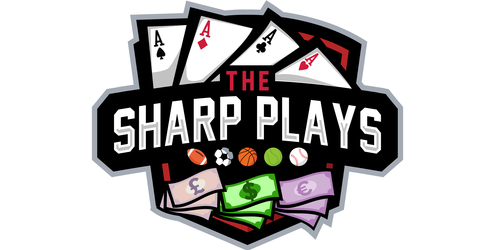A good friend passed this gem of an article to me recently and said, “Your audience is going to love this one.” He was right — and after reading it myself, I couldn’t agree more. It’s one of my favorite breakdowns on parlays I’ve seen in a while.
I asked him if I could give him credit, but he declined. Classic move. Either way — thank you, my man! I’m confident the TSP crowd is going to get jiggy with this one. Let’s dive in.
🎯 The Core Concept: Beating the Odds with Parlays
“The goal of parlays is to win at a greater frequency than the odds pay.”
This quote sets the tone for the entire article.
Let’s say you’re playing a 2-team parlay that pays 6-1. Your job is to hit it at a frequency that beats the implied odds. In this case, if you can hit that parlay once every five times, you’re ahead — because the true odds are 4-1, but you’re getting paid 6-1.
The takeaway? Parlays aren’t sucker bets if you’re not a sucker bettor.
📊 The Math Behind Parlays: A Quick Look
Let’s assume a very conservative long-term win rate of 55% (which is strong by pro standards). Below is a table (from a linked article) showing just how this affects your edge when playing parlays:
| Parlay Size | True Odds (50%) | Book Pays | True Odds (55%) |
|---|---|---|---|
| 2 | 3 to 1 | 13 to 5 | 2.3 to 1 |
| 3 | 7 to 1 | 6 to 1 | 5.0 to 1 |
| 4 | 15 to 1 | 12 to 1 | 9.9 to 1 |
| 5 | 31 to 1 | 24 to 1 | 19.9 to 1 |
| 6 | 63 to 1 | 48 to 1 | 35.2 to 1 |
| 7 | 127 to 1 | 92 to 1 | 65.8 to 1 |
| 8 | 255 to 1 | 176 to 1 | 118.5 to 1 |
| 9 | 511 to 1 | 337 to 1 | 215.9 to 1 |
| 10 | 1023 to 1 | 645 to 1 | 394.3 to 1 |
| 11 | 2047 to 1 | 1233 to 1 | 719.4 to 1 |
| 12 | 4095 to 1 | 2356 to 1 | 1302.8 to 1 |
You can see where things get interesting: the true odds vs. payout odds start working in your favor once you cross that 55% win threshold.
🔍 A Deeper Example: 7-Team Parlay at 55% Win Rate
Let’s say you hit 55% of your bets. For a 7-team parlay:
- The chance of you hitting it is 65.8 to 1
- The book pays you 92 to 1
That’s a 26.2-1 edge in your favor! That’s no joke.
Here’s the expected value formula used:
=((TrueOdds - PayoutOdds)/(TrueOdds + 1))Plug in:
=((65.8 - 92)/(65.8 + 1)) = -0.39222That’s a 39.2% edge against the book! For every $1 wagered on a 7-teamer at that clip, your expected long-term return is $0.3922 profit. That’s MASSIVE when you compare it to the 6.96% edge that comes from hitting 56% on straight bets.
Sure, straight bets put more money in play and generate steadier ROI. But parlays — especially for sharp bettors — pack a serious punch.
🔢 Dial It Up: The 12-Team Parlay Illustration
Obviously, 12-teamers are wild, but let’s look at the math:
- If you’re hitting 55% of your bets, the true chance of hitting a 12-teamer is 1,302.8 to 1
- But the book pays 2,356 to 1
That’s an extra 1,053 units you’re gaining in edge if you play long enough. That’s why parlays can become powerful profit tools when your hit rate is solid.
🚨 But Let’s Be Clear…
Parlays are a sucker bet if you suck at betting.
If you’re a 50% capper, you’re bleeding value — the book has all the edge.
But if you’re:
- Smart with selection
- Selective with exposure
- Consistent with performance
…then parlays become more than just lotto tickets — they become calculated leverage.
📥 Bonus Read
Want to nerd out even deeper?
Grab the original PDF that inspired this article:
👉 How to Profit from Parlays (PDF)
If the link gives you trouble, just let me know — happy to email you a copy.
🧠 Final Thoughts: Use the Right Tool for the Job
Parlays aren’t inherently dumb. They’re just tools, and tools require skill to be effective. The better you are at picking winners, the more parlays start working for you instead of against you.
So, next time someone says parlays are always sucker bets…
…ask them what their long-term win rate is.
If it’s sub-55%, yeah… it’s probably not the best idea.
But if it’s above? 🤔 Then you might just be holding a high-octane betting weapon in your hand.
🎲 Good luck in your action!
~ The Sharp Plays
